|
 |
|
 |
|
 |
 |
| |
16:9 in English: The Handheld Digital Camera Aesthetics of The Blair Witch Project and Cloverfield (via Strange Days)
By JENNA NG
This article critically interprets the aesthetics of the handheld digital camera—whereby the entire film consists of “footage” shot by its characters in the style of a home video—using The Blair Witch Project (1999) and Cloverfield (2008) as case studies. Riffing off the science-fiction technology of SQUID in Kathryn Bigelow’s film, Strange Days (1995), the aesthetics of the handheld digital camera are analysed from three aspects: mobility, omnivoyance and spectatorship.
The Mimetic Point of View
In the science-fiction world of Strange Days, a virtual reality machine called SQUID (short for “superconducting quantum interference device”) records and plays back lived experience in multi‑sensory detail. Worn like a skull cap (fig. 1), a character (the player) uses SQUID to experience an event by undergoing the entire sensorium of the person who recorded it (the recorder) and sinking fully into the latter’s immersive reality. The images and sounds of SQUID are identifiable by their unflinching first-person point‑of-view (POV) (fig. 2-4), now wholly shared between recorder and player. In turn, the spectator, sutured to the POV of the SQUID player, is drawn into the same perspective: she, too, sees and hears only what the player/recorder is experiencing.
A first-person POV is typically transgressive in that it breaches the viewing point of the camera. Photographic technology is affiliated to the one‑point perspective of the camera obscura and Renaissance painting, and the lens of the camera (and therefore the eye of the spectator) conventionally remains at an imaginary viewing point situated outside the scene being viewed. The spectator thus occupies a transcendent position, one not part of the visual field, and cinema generally does not violate this structure of distanced and fixedly perspectival viewing (1).
For example, all three looks in cinema as distinguished by Laura Mulvey in Visual Pleasure and Narrative Cinema abide by this distanced perspective of the spectator:
- the camera’s look as it records the pro-filmic event;
- the audience’s look at the image; and
- the look the characters exchange within the diegesis.
(Mulvey 1975, pp. 6-18)
These three gazes, by placing the spectator in a disassociated position, provide her with perspectival distance; she is omnipresent to the film’s action, yet is outside of it.
However, this traditional viewing point does not always hold. For example, Paul Willemen’s fourth look—the look of a character at the viewer—transgresses the spectator’s removed distance:
Jacques Lacan described this fourth look [the look at the viewer] as being ‘not a seen gaze, but a gaze imagined by me in the field of the Other’. It is this look which ‘surprises [me] in the function of voyeur, disturbs [me] and reduces [me] to a feeling of shame.’ (Willemen 1993, p. 107) |
|

Fig. 1. SQUID cap in Strange Days (1995).



Figs. 2-4. Strange Days (1995). The first-person POV of SQUID.
(1) There are, of course, exceptions, such as Alfred Hitchcock’s Rear Window, where the audience, at strategic points of the film, look by proxy with LB Jeffries, and where Lars Thorwald knows that LB Jeffries is looking at him. |
|
| |
In the fourth look, the spectator becomes the object of the imagined gaze from the diegesis, and in the process is turned from spectator to voyeur. The fourth look thus transgresses her protective distance from the film’s action, and that violation, as Willemen describes it, is disturbing and invokes feelings of shame. A first-person POV similarly transgresses the distance between character and spectator by drawing the latter into the former’s world, vision, and even subjective state (2). The spectator thus shares the vulnerability of the character and the stakes in the diegesis; she, too, becomes part of the film. In this case, she is not voyeur but participant; her feelings are not of shame but of impairment. Her vision now limited, she is burdened with vulnerability and ignorance aligned with the character whose POV she now shares. By partaking of the action in surrendering her gaze to that of the character’s, she is also complicit with the action in the film.
To the extent that SQUID images are viewed from the subjective optical regime of the recorder/player, they, as with first-person POV shots, similarly transgress the spectator’s protected distance: in the commingling of her gaze with the first‑person POV of SQUID, the spectator is drawn into the film’s action by being compelled to see and hear the experiences of the SQUID recorder/player. However, SQUID images are different from conventional first-person POV in a significant way: they are recorded images and, strictly speaking, are not as seen by the character, but as recorded by him via the SQUID camera. SQUID images are thus not first‑person optical POV, but first‑person lens-based POV: we are presented not with the vision of the character, but the vision of a camera lens. In other words, the spectator’s protected distance from the action of the film is transgressed not by a conventional first-person optical POV, but by a lens-based POV, one which follows a mobile lens rather than a mobile eye. Of course, SQUID cameras, being science fiction, do not exist: the POV of SQUID in Strange Days, then, is only mimetic, with the film camera mimicking SQUID in the technology’s omnipresence, mobility and ease of operation. As such, SQUID, in its crystallisation of the roving lens as a legitimate POV, presents two important premises: mobility and omnivoyance. With these two characteristics in play, we are able to envision a lens-based POV, mimic a mobile lens, and present a mimetic POV of the camera lens. In the rest of this essay, I will argue how the two aspects of mobility and omnivoyance of SQUID in Strange Days shape the aesthetics of the handheld digital video in The Blair Witch Project and Cloverfield.
Of Mobility and Omnivoyance: The Digital Camera
The science-fiction mobility and omnivoyance of the lens-based POV of SQUID technology extends to the recording process, so effortless is it in Strange Days to capture a person’s experience as a commodity for consumption. However, such mobility and omnipresence of recording is yet to be borne out in real life, for the logistics of recording defy the omnipresence of SQUID: cameras, even lightweight ones used for cinema verité, are still relatively heavy and bulky; film stock is expensive; editing and postproduction remain specialised processes. By not being common or easily acquired, the recorded first-person POV in real life remains privileged.
Nonetheless, digital technologies potentially change this. Digital cameras are commonplace today: not only does the market abound with “prosumer” cameras like the Sony DSR, the Canon PowerShot G9, the Nikon Coolpix, but many other devices, such as compact digital still cameras and mobile phones, also contain digital video recording functions, enabling an unprecedented mobility and ease in our recording of moving images. In turn, this has sparked a proliferation of images which is radically changing our mediascape and communication networks. For example, the phenomenon of moblogging—connecting camera phones to online diaries—enables real-time and on-the-go visual postings of experiences and events. The explosion of YouTube, googlevideo and other video-sharing internet networks is likewise fueled by the ubiquity of digital video recording.
The trend of pervasive recording even has a label—“life caching”—which refers to the recording and collecting of one’s daily life in images using the camera of a mobile phone. Everything is up for grabs:
In true life caching fashion, Samsung’s current ‘Show Your World’ US ad campaign urges camera phone users to record their daily lives and turn them into movies. In one of the first commercials, a perky actress shoots her way through a love story, a rain storm, flambéed meals, a fashion show, a boardwalk game arcade, a hip night spot and a hotel balcony overlooking the Empire State Building. In Samsung’s own words: ‘the most vibrant way to capture and share life experiences with family and friends.’…Expect the camera phone to become the centerpiece of Life Caching around the globe. (”Life Caching,” trendwatching.com)
|
|
(2) For a taxonomy of mobile p.o.v. shots, see Jakob Isak Nielsen’s PhD dissertation Camera Movement in Narrative Cinema - Towards a Taxonomy of Functions (2007), p. 261. |
|
| |
Indeed, the future of life-caching is envisioned to include not only the recording of images but other sensor data as well, such as movement, light level and temperature, via Microsoft’s SenseCam, “a badge-sized wearable camera that captures up to 2000 VGA images per day onto 128Mbyte FLASH memory” (fig. 5) (”Life Caching,” trendwatching.com). We now see more camera lenses than eyeballs: AA Gills, reviewing the Democrats convention at Denver, writes that “every conventioneer has a camera. Everybody is recording everybody else. They’re all commentators and viewers, participants and audience.” (Gills 2008). In short, recording has become mobile and omnipresent, its images to be shared, posted, blogged and transported.
Handheld Camera Aesthetics (I): The Leashed Camera
The portability, and thus mobility, of the handheld digital camera is a crucial premise of The Blair Witch Project and Cloverfield, both made possible only by the camera being itinerant. The three teenagers in Blair Witch set out to record a documentary, yet much of the film also consists of on‑the-fly footage filmed by Heather herself, not only because she wants to record their documentary process, but, by virtue of the portability of her digital camera, also because she can. In Cloverfield, the camera is an unwanted inconvenience, taken finally by Hud so that he may have an excuse to approach Marlena, a girl he likes. Here, the camera’s portability is stretched to the point of dispensability, eventually shoved to Hud and accepted only to further his ulterior motives.
Yet, the irony of the handheld digital camera is that, despite its unprecedented mobility, the spectator is frequently forced into the least mobile position. The three different looks as distinguished by Mulvey are generally distinct because the camera remains privileged equipment: it confines the action in the film to its diegetic world and characters, thus providing the distance by which the spectator is removed from the film. Yet, the aesthetics of the handheld digital video offer only the perspective of the camera as held by the character in the film, i.e. it converges the look of the camera with the intra-diegetic look. Whatever the camera sees is generally what the camera‑holding character chooses to see (and record). Certainly, this does not happen all the time: sometimes the character is running and the camera is left dangling, or gets knocked out of focus. Nevertheless, for the majority of the time, the character and the camera look simultaneously at something or someone. In turn, the spectator, by sharing their gaze, is co‑opted into the film and becomes a participant to the images: she is no longer merely looking at a distance, but actively partaking in the gaze of the diegetic camera and character. |
|
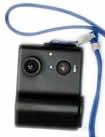
Fig. 5. Microsoft SenseCam Prototype. The article continues: “This is similar to an aircraft ‘Black Box’ accident recorder but miniaturised for the human body. The SenseCam is part of Microsoft’s LifeBits program, an experiment in lifetime storage.” (”Life Caching,” trendwatching.com). |
|
| |
However, in its portability, the camera also frequently records sequences in which the viewer sees very little by virtue of its frenetic movement or having to be put down somewhere—for example, the sequences of blackness in Blair Witch when the students run through the trees at night; or Hud temporarily resting the camera on the floor while he goes to help Rob and Lily rescue Beth (fig. 6), so that all we see for a while are Beth’s trapped legs writhing in pain while the rescue operation occurs out of the frame. By converging the camera’s look with the intra-diegetic look, the handheld camera, conventionally celebrated for its mobility and omnipresence, paradoxically becomes restricted, for the spectator’s vision is correspondingly confined by the limited images of the camera in the diegesis. Indeed, these common sequences act as reminders of what cannot be seen rather than what is being seen; they are pointed referrals to the larger spaces beyond that as depicted. This strategy of absence is central to the aesthetics of handheld video: to make that which is not visible, and which lies outside the visual field, a constituent—dramatically and logically—of that which is seen. In this way, the spectator is often made aware of what she cannot see, of what is obstructed to her, and of how un‑omnivoyant she is. For all the recording one may do on-the-fly with the digital camera, for all its promised omnivoyance because one can now do all that recording on the fly, the camera is essentially limited because it is restricted to the intra-diegetic look, or to whatever the character chooses to record. The spectator’s gaze is only as mobile as the camera, and in this case the camera is only as mobile as the character’s own look. The aesthetics of the handheld digital cinema is thus essentially self‑serving, for the spectator may only occupy the POV of the character. In that sense, these limitations leash the handheld digital camera, as a direct converse of the famous entfesselte Kamera—“the unleashed camera”. As Jacques Aumont writes:
[The entfesselte Kamera] with the aid of flawless technique limitlessly extended the capacity for movement of the cinematographic eye. The phrase was invented with respect to E.A. Dupont’s and Karl Freund’s joint achievement in Variety; there are shots filmed from the great Ferris wheel of an amusement park or, even more strikingly, from a flying trapeze. … We no longer know who invented the ‘unleashed camera’ … Far more important than the question of authorial provenance is the act of unleashing itself, the fantasy of a camera enabled not only to see all, but also to see from anywhere. (Emphasis added. 1997, 247)
If the fantasy of the unleashed camera is enabled “to see all” and “from everywhere”, then the reality of the handheld digital camera is enabled not only to see very little at some points, but also from only one place, which is wherever the character allows the camera to be—the leashed camera. The irony is that today we have more images than ever before, yet they are rendered relatively restricted and immobile. The eye of the camera, in its mobility and omnivoyance, is instead used by being turned increasingly on ourselves. If the film camera had been about mobility and the variable gaze—“this desire for mobility and unprecedented point of view”—the aesthetics of handheld digital video are about the direct opposite: the desire for mobility to look into ourselves and to imprison our point of view. |
|

Fig. 6. Cloverfield (2008). Camera rested on floor while Hud helps rescue Beth. |
|
| |
Handheld Camera Aesthetics (II): The Scopophilic Drive
Willemen identifies the fourth look as the look of the character at the spectator and, by taking Lacan’s definition, describes it as imagined. However, in these films of handheld digital video, the character directly looks at the camera and addresses the spectator, thus actualising the fourth look. There are numerous incidences of this in both films, such as the famous apology scene in Blair Witch (fig. 7). In Cloverfield, Hud, before climbing the roof of a building, says directly to the camera: “all right, if this is the last thing you see, that means I died”. In its penultimate scene, Rob and Beth huddle under a bridge in Central Park to address the camera with what they suspect might be their final speeches alive. The spectator, by virtue of her shared gaze, becomes the addressee, and thus invariably drawn into the action of the film.
In this way, the fourth look converges with the intradiegetic look, resulting in our becoming part of the diegesis, because the film is for us. When Woody Allen, arguing about Marshall McLuhan in Annie Hall, looks straight at the camera with his punch line, “boy, if life were only like this” (fig. 8), the premise of his joke is that the camera is not supposed to be there. However, when Heather looks at the camera while introducing her room (fig. 9), the fourth look is literal because the camera is supposed to be there. In the process, the spectator becomes a character, now recognised, literally and beyond any hint of irony, as a gazing subject. No longer ensconced in her omnivoyance, her status and position as spectator is radically compromised, for the film is now not only the view of something but also something as viewed, and furthermore, as argued above, in a restricted and obstructed way. Her scopophilic drive is thus turned back towards her, as the characters look directly and unironically at her. Reversed into this opposite, the spectator’s voyeuristic pleasure quickly changes to displeasure in the unease of her now profoundly unstable position in the viewing process.
Handheld Camera Aesthetics (III): Agency of the Camera
The implication of the spectator’s gaze as a literal fourth look also affects the intra-diegetic look between the character and the camera. In their interaction, the camera takes on a certain agency to itself become a character—a cold eye void of reference to the human hand which transports and operates it. One example of such agency is the scene in Blair Witch in which Heather records her washing of the blood from her hands while telling herself (and by extension the spectator): “see, see, it’s clean” (fig. 10). The scene represents more than a cleansing, but signifies a new visual relationship between Heather and the camera: by forcing the camera to register her cleansed hand, she is calling for it to provide for her own eyes its manner of seeing—an independent eye without engagement, participation or assumption—and to implicate the agency of the camera’s cold eye to affirm her washed hand. The eye of the camera—its agency—typically presents a crucial distance or estrangement: what life is in you is yours, and what life is in that LCD screen is not yours. This is a passive, affectless eye, one with almost a kind of ocular loneliness. We again feel this loneliness in Cloverfield, such as when the camera was temporarily cast aside as Hud goes to help rescue Beth, or after Hud dies in the jaws of the monster and the camera lies in the grass, flexing and focusing in the confusion of its abandonment (fig. 11).
In that sense, too, the digital camera creates its own ocular regime, one which is neither precisely objective nor conventionally subjective, but social and almost anthropomorphic. For example, when the lens of the camera is splattered with blood in Cloverfield, the effect is that the camera, too, has been injured like the other human characters, a reaction reinforced when Hud comes round from behind the camera to wipe the blood off its screen, tending to it like how he had treated Marlena’s wounds (fig. 12-14). Yet, the camera is also transpersonal. While inevitably tied up with the identity of the camera holder, that association is fluid and changeable, such as in the final scene of Blair Witch, in which the camera is knocked away from Mike so that the spectator—as a crucial effect of the film’s horror—does not know who is operating the camera or what is happening behind it. The blurred images registered by the camera literally mirror its confusion: what is happening to the camera is unknown both to spectator and character, and the fizzling out of its images signifies not only the horror of the diegesis but also the end of its agency and, by extension, the character which had held it.
We need to look less
By riffing off the technology of SQUID in Strange Days, I have tried to illustrate the engagement of mobility and omnivoyance in digital culture and the significance of POV with the aesthetics of the handheld digital camera. We are surrounded today by lenses via the technological devices at our disposal, yet, as I have argued, ironically results in limitations of our vision and compromises our scopophilic drive, where a camera takes on an agency which virtually substitutes the spectator’s own eyes. Rather, I argue that the utopia of mobility and omnivoyance is threatened by a limitation of vision amounting to a sense of blindness from simply seeing too much via these ubiquitous cameras, from an excess of images which leads us, rather, not to see them at all. Stan Brakhage in 1963 describes this with an almost prophetic force:
It is an age which artificially seeks to project itself materialistically into abstract space and to fulfill itself mechanically because it has blinded itself to almost all external reality within eyesight and to the organic awareness of even the physical movement properties of its own perceptibility. (Simpson 2003, p. 74)
We need to look less. The real object of horror is the camera itself: here’s looking at you, and all the witches in the trees, and all the carnage around you, and there is absolutely nothing you can do but look. |
|
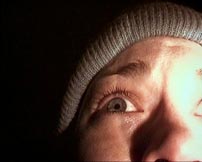
Fig. 7. The apology scene in The Blair Witch Project (1999).
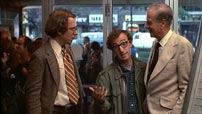
Fig. 8. Alvy Singer (Woody Allen) looks straight at the camera in Annie Hall (1977).
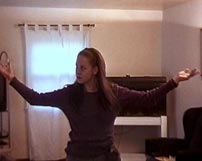
Fig. 9. Cloverfield (2008). Heather introduces her home.

Fig. 10. The Blair Witch Project (1999). Heather showing her hand to her camera.
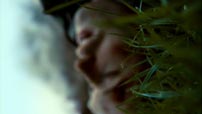
Fig. 11. Cloverfield (2008). Camera lying in the grass next to Hud.
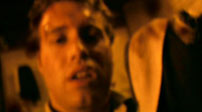
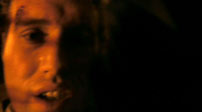
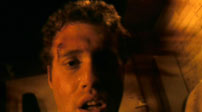
Figs. 12-14. Cloverfield (2008). Hud cleaning his camera.
|
|
 |
 |
 |
 |
 |
|
 |
 |
 |
| |
Facts
Aumont, Jacques. “The Variable Eye, or the Mobilization of the Gaze”, trans. by Charles O’Brien and Sally Shafto, in Dudley Andrew (ed.), The Image In Dispute: Art and Cinema in the Age of Photographing, Austin, TX: University of Texas Press, 1997.
Brakhage, Stan. “Metaphors on Vision [and] the Camera Eye”, Film Culture, Fall 1963, pp. 12-23, reprinted in Philip Simpson et al (eds), Film Theory: Critical Concepts in Media and Cultural Studies, New York: Routledge, 2003.
Gills, AA. “Barack Obama’s Army”, TimesOnline, 31 August 2008, (last accessed 26 May 2009).
Mulvey, Laura. “Visual Pleasure and Narrative Cinema”, Screen, Vol. 16 (Autumn 1975), pp 6-18.
Nielsen, Jakob Isak. Camera Movement in Narrative Cinema – Towards a Taxonomy of Functions (Aarhus: Department of Information and Media Studies, Faculty of Arts, University of Aarhus, 2007). PhD dissertation.
NN, “Life Caching: An emerging consumer trend and related new business ideas”, from http://www.trendwatching.com/trends/LIFE_CACHING.htm (last accessed 26 May 2009).
Willemen, Paul. “The Fourth Look”, in Looks and Frictions: Essays in Cultural Studies and Film Theory, London: BFI Publishing, 1993. |
|
|
|
|
 |
 |
 |
 |
16:9 - juni 2009 - 7. årgang - nummer 32
Udgives med støtte fra Det Danske Filminstitut samt Kulturministeriets bevilling til almenkulturelle tidsskrifter.
ISSN: 1603-5194. Copyright © 2002-09. Alle rettigheder reserveret. |
11 |
|
|
 |
 |
|
|